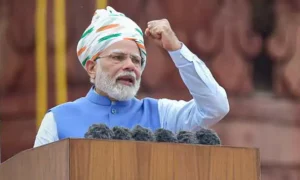Over the weekend, the government finally signalled its intent to defend the rupee. It announced several steps to prop up capital inflows and to curb “non-essential” imports. It emphasized that it will stick to its fiscal deficit targets. At the same time, it said the Indian economy was on a sound footing and there was no reason to panic.
Almost everybody acknowledges that India’s external vulnerabilities are now lower than what they were during the taper tantrum in 2013. We may, however, be missing the markedly different external environment. In 2013, the nervousness in the currency markets was because the US Federal Reserve had said it would start to wind down its quantitative easing programme.
At that time, liquidity was still being created, all that was proposed was to taper it. This time around, the Fed is doing “quantitative tightening” by allowing a steadily increasing amount of its bond holdings to mature each month without being reinvested, shrinking its balance sheet in the process. This has coincided with the US treasury mopping up dollar liquidity by issuing bonds to finance the expanding US fiscal deficit.
In fact, Reserve Bank of India (RBI) governor Urjit Patel had warned presciently in June this year that this would create a dollar funding crisis and was a “double whammy” for emerging markets. Interest rates, too, have moved up in the US and are likely to continue their upward climb.
That’s not all. The external environment is far worse now than in 2013, with trade wars rampant, a reworking of trade treaties, heightened geopolitical tensions and an uncertain future for the WTO. It would be best, therefore, not to underestimate the possibility of a rapid deterioration of the external environment, which could make it a challenge to fund the current account deficit.
To be sure, the silver lining is that Brent crude prices were above $100 a barrel in 2013, much higher than where they are today. On the other hand, as Chart 1 shows, India’s non-oil trade deficit has gone up by leaps and bounds. It is this deficit the government hopes to reduce by targeting “non-essential imports”.
What is the scope for reducing non-essential imports? For the June quarter, oil imports were 28% of total imports, engineering goods 18%, chemicals and related products 10%, gold and silver 7.6%, ores and minerals 6.8%.
The much-maligned electronic goods imports were 11.5%, with telecom instruments at 4%. While clamping down on imports will yield gains at the margin, such an exercise has to be done carefully, making sure that lobbies do not capture the process.
As HDFC Bank chief economist Abheek Barua points out, India’s tariffs are still comparatively higher than those of its trading partners and the government has to tread carefully to avoid sending out protectionist signals. A. Prasanna, an economist with ICICI Securities Primary Dealership Ltd, warns there is a risk that trading partners could also retaliate.
Why is targeting the current account so essential? Here’s what the IMF said in its recent assessment of the Indian economy “Based on India’s historical cash flows and restrictions on capital inflows, global financial markets cannot be counted on to reliably finance a CA (current account) deficit above 3% of GDP.”
A Kotak Economic Research report by Suvodeep Rakshit and Upasna Bhardwaj estimated the current account deficit at 2.8% of GDP in 2018-19 with oil at $72.5 per barrel and at 3.2% with oil at $80. It’s no wonder then that the rupee has been hammered.
Why the need to compress imports? While RBI has allowed the rupee to fall to address overvaluation, any impact of exports is likely to happen only in the long run. Also, while foreign exchange reserves amounted to 7.5 months of prospective imports of goods and services at the end of 2017-18, compared to 6.7 months in 2013-14, reserves have started to fall. What’s more, if investment demand picks up, that will increase the current account deficit. As Chart 2 shows, the IMF predicts that India’s forex reserves, in terms of months of imports, will be lower at the end of 2019-20 than in 2013-14.
The other measures announced last Friday are aimed at bolstering the capital account by luring inflows. Analysts have pointed out that some of these measures are unlikely to be effective in the short-run, as they assume foreign investors are waiting to increase their exposure to rupee assets, which is unlikely as long as the current nervousness in the markets persists. What’s more, some of the announced policies, such as a review of mandatory hedging rules for infrastructure loans, are fraught with risk.
As Barua says, “…most of the measures aim at increasing short-term external debt or in effect worsen the risk profile of companies (by increasing un-hedged exposure)… Increase in short-term ECBs or FII exposure could lead to further worsening of vulnerability ratios and the global investors might actually take this negatively.”
That said, it’s worth remembering that the current fall in the rupee is the result of a global meltdown of emerging market currencies. It is likely that dollar strengthening could have reached a peak for the time being and calm will therefore return to emerging markets. On the other hand, as IndusInd Bank chief economist Gaurav Kapur says, India still has plenty of weapons in its arsenal if push comes to shove, such as issuing NRI bonds, or restoring buyers’ credit and raising interest rates. For the moment, the government and RBI are keeping their powder dry and the measures announced over the weekend are merely a first salvo. If they don’t do the job, more heavy duty fire power will be employed.
The more important question is: how do we address the vulnerabilities in the Indian economy to enable it to grow strongly without leading to a balance of payments crisis?
For more updates: Like us on Facebook and follow us on Twitter & Instagram


































